Bartram's Encyclopedia of Herbal Medicine
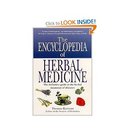
Containing over 900 entries of general disease conditions and corresponding herbal treatments, this book covers: therapeutic action, 550 monographs of medicinal plants, and the properties of herbs and preparations such as tinctures, liquid extracts, poultices and essential oils.
The Complete Herbal Tutor: The Definitive Guide to the Principles and Practices of Herbal Medicine

Herbal medicines have been used for many centuries to treat illnesses and restore health, and today herbalism still remains the most widely-practiced form of medicine around the world. Written by a leading Medical Herbalist, "The Complete Herbal Tutor" provides in-depth knowledge of the practice and theory of herbal medicine, including everything you need to know about its history, how it works, how to grow, gather and prepare herbs, and how to use them to create a herbal prescription. The rigorously-researched and illustrated materia medica contains over 150 herbs, with clear explanations of their properties, active ingredients and the latest scientific developments on their uses. There is also a clear explanation of how herbs can be used to treat each of the body's systems, with advice on using remedies for healing a range of specific conditions. Clear, concise and easy to use, this book is the 21st-century bible for students, professionals and home herb users alike.
Complete Herbal
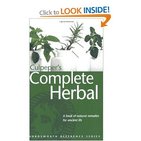
From Amara Dulcis to Yarrow, All-Heal to Viper's Bugloss, Culpeper's Complete Herbal and English Physician Enlarged offers remedies for all ills known to Seventeenth century society. Together with the alphabetical section on herbs, their provenance and properties, there is The English Physician and Family Dispensary, which provides an astrologo-physical discourse of the human virtues in the body of man.
Nicholas Culpeper (1616-1654) studied at Cambridge and became an apothecary, physician and astrologer in London. Whilst only the imprudent would follow his dictates today without question, the Herbal remains a fascinating historical treatise, and stands as a monument to botanical and medical science.
Nicholas Culpeper (1616-1654) studied at Cambridge and became an apothecary, physician and astrologer in London. Whilst only the imprudent would follow his dictates today without question, the Herbal remains a fascinating historical treatise, and stands as a monument to botanical and medical science.
Medical Herbalism: Principles and Practices
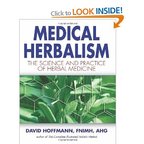
A foundational textbook on the scientific principles of therapeutic herbalism and their application in medicine- A complete handbook for the medical practitioner- Includes the most up-to-date information on preparations, dosage, and contraindications- By the author of "The Complete Illustrated Holistic Herbal""Medical Herbalism" contains comprehensive information concerning the identification and use of medicinal plants by chemical structure and physiological effect, the art and science of making herbal medicine, the limitations and potential of viewing herbs chemically, and the challenge to current research paradigms posed by complex plant medicines. It also includes information on toxicology and contraindications, the issues involved in determining dosage and formulation types for an individual, guides to the different measurement systems and conversion tables, and the pros and cons of both industrial and traditional techniques.With additional sections devoted to the principles of green medicine, the history of Western Herbalism, the variety of other medical modalities using medicinal plants, an extensive resource directory, and a discussion of treatments organized by body system, "Medical Herbalism" is the comprehensive textbook all students and practitioners of clinical herbalism need to develop their healing practices.
Encyclopedia of Herbal Medicine
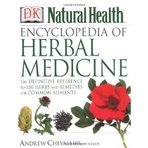
Fully updated and authoritative, this revised edition of DK's Encyclopedia of Herbal Medicine makes this classic, completely illustrated reference guide even bigger and better than the original. Featuring more than 550 medicinal plants and the most current scientific research, this volume provides a comprehensive guide to healing with the world's oldest form of medicine. A unique photographic index profiles over 550 plants, with detailed information on habitat and cultivation, parts used, active constituents, therapeutic properties, and traditional and current uses. A special section profiles 100 of the most common plants, featuring herbal preparations and recommendations for self-treatment. Guidelines on growing, harvesting, and storing medicinal plants also demonstrate making remedies for home use. In addition, accessible text offers fascinating insight into the chemistry of plants and their healing properties, explaining how and why they work as medicines within the body. The major herbal traditions of different cultures- Europe, India, China, Africa, Australia, and the Americas- are vividly described. A review of herbs from a historical perspective reveals the connection between medicinal herbs and cultural beliefs toward healing. Offering extensive coverage of all that herbs are- from cultural traditions to chemical components to self-treatments for common ailments-this Encyclopedia of Herbal Medicine is the ultimate reference for anyone interested in exploring the healing benefits of medicinal plants.
Holistic Herbal: A Safe and Practical Guide to Making and Using Herbal Remedies
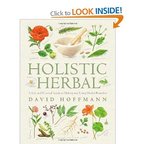
New jacket edition of this classic herbal by internationally renowned herbalist David Hoffman. Easy to use, the herbal is hugely popular with herbalists and laypeople worldwide
The Holistic Herbal covers everything you need to know about growing, gathering, preparing, using and taking herbal medicines to improve and maintain health.
With simple b/w line drawn herb illustrations throughout, the book is extremely attractive and contains:-
a simple introduction to health, well-being and how your body works.
• a guide to specific health problems and concerns (you don’t need to be sick to take a herbal cure!) and ‘which herb’ for a range of conditions.
• A–Z herbal, covering over 200 different medicinal herbs and plants.This section comprises the main part of the book and is full of detailed information about each herb.
The Holistic Herbal covers everything you need to know about growing, gathering, preparing, using and taking herbal medicines to improve and maintain health.
With simple b/w line drawn herb illustrations throughout, the book is extremely attractive and contains:-
a simple introduction to health, well-being and how your body works.
• a guide to specific health problems and concerns (you don’t need to be sick to take a herbal cure!) and ‘which herb’ for a range of conditions.
• A–Z herbal, covering over 200 different medicinal herbs and plants.This section comprises the main part of the book and is full of detailed information about each herb.
Principles and Practice of Phytotherapy
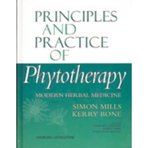
This groundbreaking text is the only comprehensive, thoroughly researched, carefully referenced, up-to-date text on the practice of herbal medicine, written by herbalists who have active experience in clinical practice, education, manufacturing and research. This book provides a detailed, practical and where possible research based rationale for the use of herbal treatments in a wide variety of clinical conditions and problems. Through the filter of current scientific literature, the authors have reappraised traditional use of herbal remedies and present realistic guidelines for modern practice. As a result "Principles and Practice of Phytotherapy" is a uniquely authoritative guide to applying herbal medicines as serious options for the treatment of some of the most troublesome conditions in the modern clinic. It will be greatly welcomed by those already using these remedies but will also be valued by any medical or healthcare practitioner who has thought about using plant remedies but was looking for a coherent approach that made modern sense.
Fundamentals of Pharmacognosy and Phytotherapy
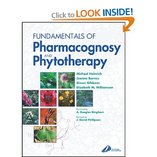
"Fundamentals of Pharmacognosy and Phytotherapy" is an important and timely book that will add to this growing interest in the use and study of medicinal plants, herbs and other natural products. It will meet the need for a modern, up-to-date textbook for students in a wide range of disciplines, including pharmacy, herbalism, complementary and alternative medicine. The four authors - Professor Michael Heinrich, Dr Joanne Barnes, Dr Simon Gibbons and Dr Elizabeth Williamson - are all experts in their respective fields, whose collective knowledge gives both diversity and authority to this important new volume.
The Essential Book of Herbal Medicine
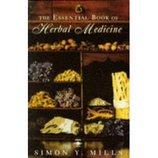
This is a reference book which combines modern medical principles and traditional medicine into a modern philosophy of herbalism. Beginning with human pathology, this book shows how plants act on the body, and how research has demonstrated that herbs are viable medicines in today's scientific climate. A pharmacology describes the active constituents of plants, while a "materia medica" describes over 200 plants and shows how to recognize them, prepare them and use them for healing purposes.
A Clinical Guide to Blending Liquid Herbs: Herbal Formulations for the Individual Patient
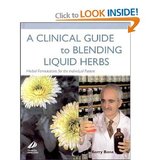
This clinical guide and practical reference is ideal for those who use and combine liquid herbal remedies for the individual needs of the patient. With three introductory chapters, 125 monographs, and various glossaries and appendices, it covers the fundamental concepts of using liquid herbals, including how the remedies are made, quality issues, and dosage guidelines. The monographs include full prescribing information that covers actions, indications, contraindications, warnings and precautions, interactions, side effects, dosage, traditional usage, pharmacological research, clinical studies, and full references.
The Essential Guide to Herbal Safety
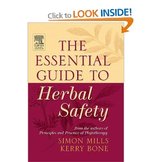
This book covers the principles and issues of safety relating to herbal medicine, and examines the relevant safety data for over 70 commonly used or contentious herbs. With contributions from leading international experts, the book covers issues of quality, interactions, adverse reactions, toxicity, allergy, contact sensitivity, and idiosyncratic reactions.
The Constituents of Medicinal Plants: An Introduction to the Chemistry and Therapeutics of Herbal Medicines
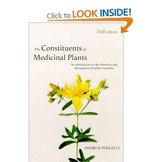
During recent years herbal medicine has become an increasingly scientifically based system of healing. Due to demands from both the public and medical establishments, studies leading to the scientific explanation of plant therapeutic capabilities are allowing this practice to gain increasing credibility and acceptance within the medical community. This book draws on the recent research and provides an introduction to the complex area of plant constituents and the therapeutic activities associated with them. Plants covered are those commonly used by herbalists throughout Europe, North America and Australasia.
Hedgerow Medicine: Harvest and Make Your Own Herbal Remedies
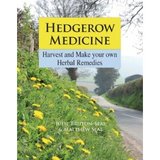
Britain's hedgerows abound with forgotten remedies for countless health problems. Julie Bruton-Seal, practicising medical herbalist, together with her co-author, the editor and writer Matthew Seal, have responded to the growing interest in natural medicine by aiming this book at the amateur who wants to improve his or her health in the same way that mankind has done for centuries around the world: by using local wild plants and herbs. There are clear instructions about which plants to harvest, when, and over 120 recipes showing how to make them into teas, vinegars, oils, creams, pillows, poultices or alcohol-based tinctures. Julie and Matthew explain which ailments can be treated, and what benefits can be expected. As well as being packed with practical information on using 50 native plants, Hedgerow Medicine also gives a fascinating insight into the literary, historic and worldwide application of these herbal remedies.
The Herbal Medicine Maker's Handbook: A Home Manual
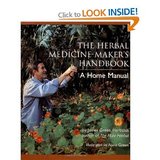
THE HERBAL MEDICINE-MAKER'¬?S HANDBOOK is an entertaining compilation of natural home remedies written by one of the great herbalists, James Green, author of the best-selling THE MALE HERBAL. Writing in a delightfully personal and down-home style, Green emphasizes the point that herbal medicine-making is fundamental to every culture on the planet and is accessible to everyone. So, first head into the garden and learn to harvest your own herbs, and then head into your kitchen and whip up a batch of raspberry cough syrup, or perhaps a soothing elixir to erase the daily stresses of modern life.
The Psychopharmacology of Herbal Medicine: Plant Drugs That Alter Mind, Brain and Behavior
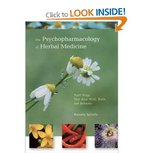
Virtually all cultures consume drugs from psychoactive plants. Caffeine, for example, is probably the most common stimulant in the world, and many modern medicines, such as morphine and codeine, are derived from plant sources. In these cases, scientific research has revealed the composition of the plants and how they interact with the nervous system. There are also many herbal medications with reputed therapeutic value that have not yet gained acceptance into mainstream medicine, partly because there has not been enough research to support their usefulness. Instead they are regarded as "alternative medicines." This is an active research area, however, and many current studies are focusing on identifying the active components, pharmacological properties, physiological effects, and clinical efficacy of herbal medicines. This book compiles and integrates the most up-to-date information on the major psychoactive herbal medicines -- that is, herbal medicines that alter mind, brain, and behavior. It focuses particularly on the effects on various areas of cognition, including attention, learning, and memory. The book covers all major classes of psychoactive drugs, including stimulants, cognitive enhancers, sedatives and anxiolytics, psychotherapeutic herbs, analgesics and anesthetic plants, hallucinogens, and cannabis.
Herbal Remedies: A practical beginner's guide to making effective remedies in the kitchen
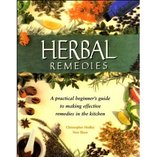
A practical beginner's guide to making effective herbal remedies in the kitchen.
